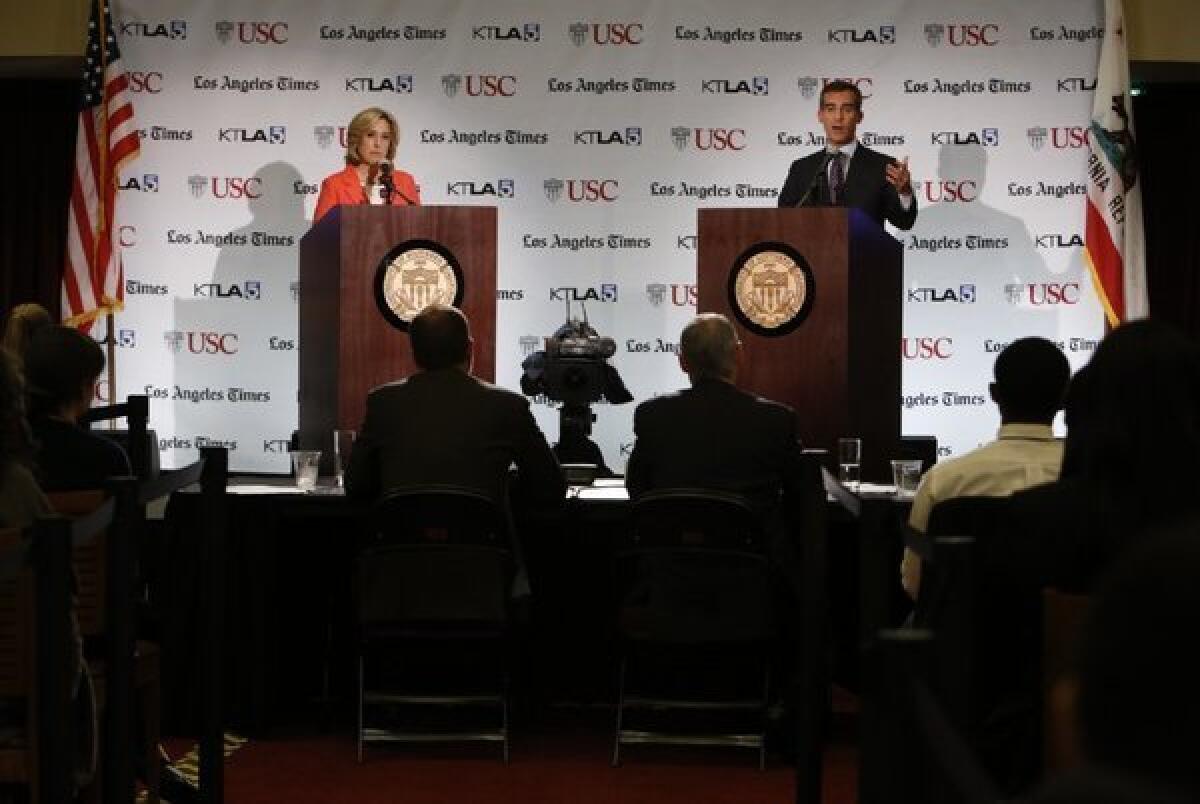A demographic snapshot of a city’s issues

Voters in Los Angeles will cast their ballots for a new mayor, city attorney, controller, and three new council members Tuesday. Hopefully, the winners will prove themselves capable of steering the city and its 3.7 million residents toward a better future.
I thought it might be interesting to consider the issues facing the incoming leadership by taking a look at some selected demographic information for the recently redrawn city council districts.
Clearly, youth poverty is problem. Nearly a third of all children in the city live below the federal poverty line. The problems is most acute in the 9th city council district, where half of all kids are poor. But it’s also a problem in the 5th district, which stretches from Encino down to West Los Angeles and across Westwood, and where 8% live in poverty, according to Jared Sanchez of USC’s Center for the Study of Immigrant Integration. The data are based on pooled annual numbers from the American Community Survey data.
While Angelenos’ median household income is just under $50,000, many residents are eking out a living. For example, in the 9th district, which includes most of South Los Angeles, that median household income is a little more than $29,000. That’s less than half of median household income in the 11th district, which stretches from Mulholland Drive down to Westchester, and from the beach across to Brentwood. Residents in that district have a median income of just under $88,000, according to the USC center.
The city remains an incredibly diverse place. Nearly half of all residents are Latino. About a third are white, 11% are Asian or Pacific Islander, and 9% are African American. But that diversity fades at the district level. More than 40% of residents in the the 8th council district, which includes much of southwest Los Angeles, are African American; 15% of residents in the 9th council district are African American. But in the 11th council district, African American make up only 5% of the population, and in the mid-San Fernando Valley’s 6th council district, African Americans account for just 3% of residents.
ALSO:
Times endorsements: May 21 election
More to Read
A cure for the common opinion
Get thought-provoking perspectives with our weekly newsletter.
You may occasionally receive promotional content from the Los Angeles Times.










